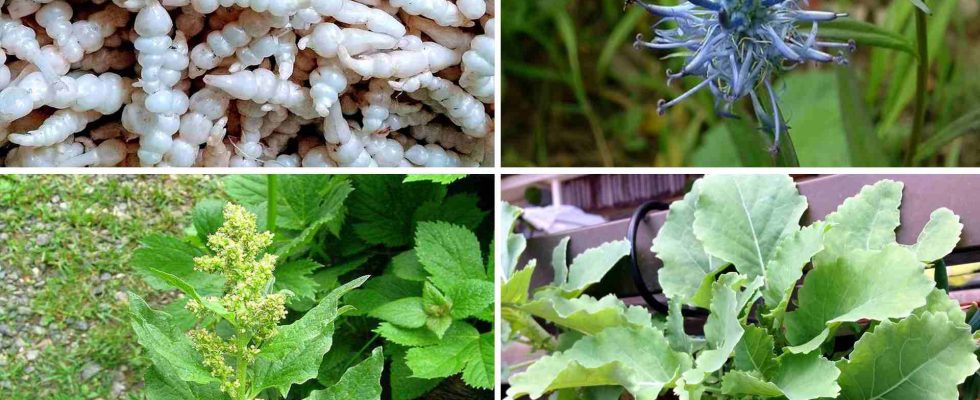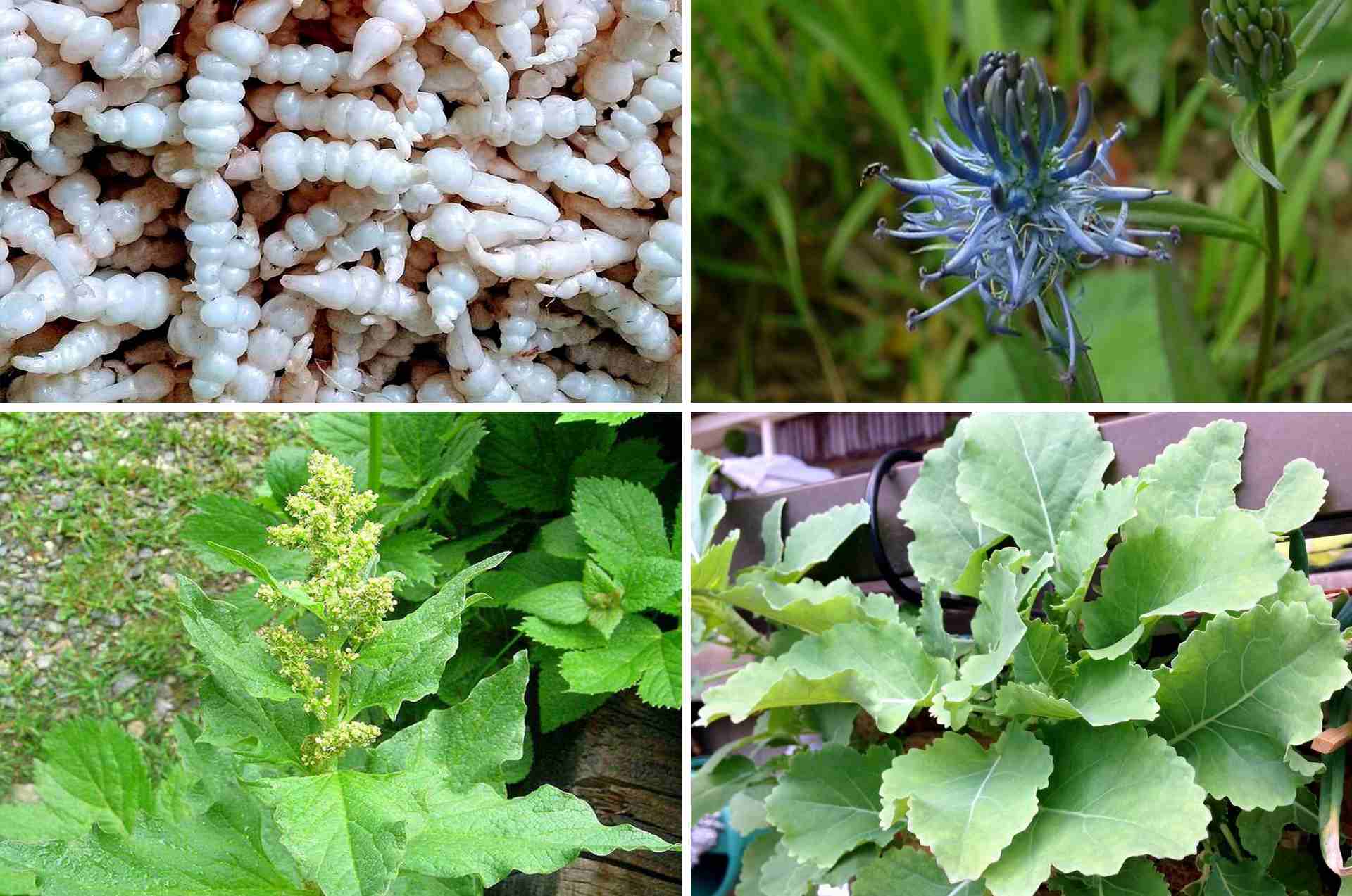
1. The bon-henri goosefoot
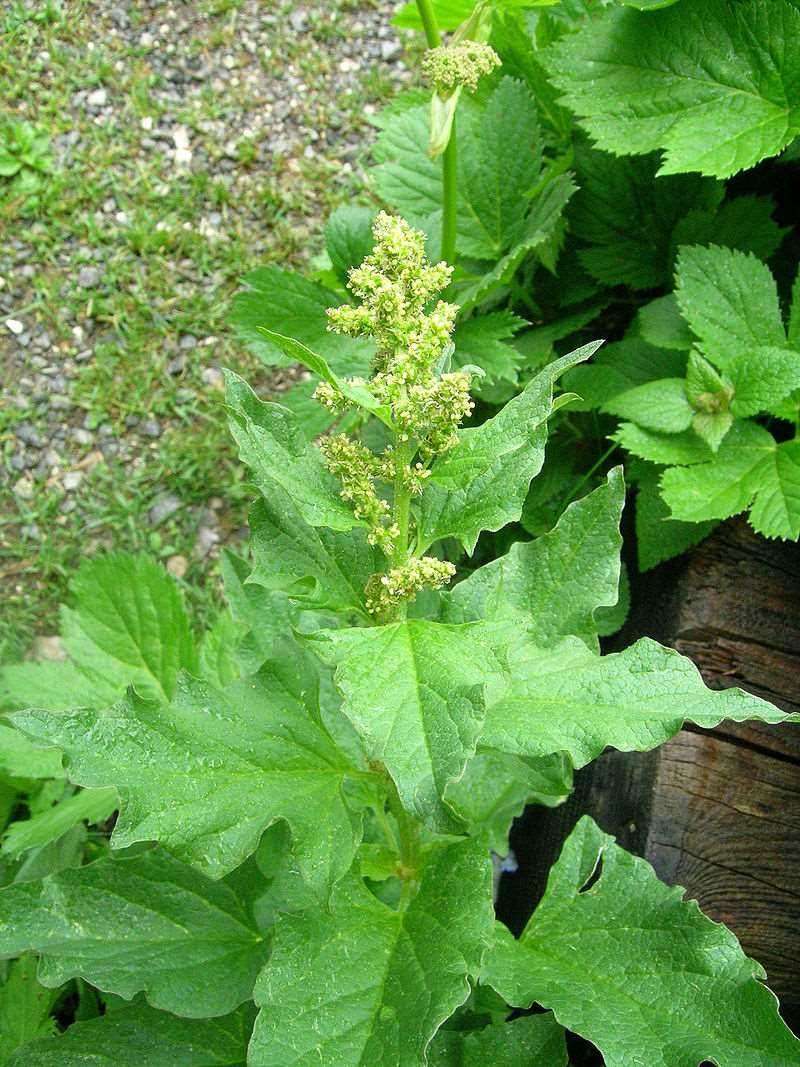

Without doubt it is the only plant dedicated to King Henry IV! This wild spinach (Chenopodium bonus-henricus) grows naturally on embankments and fertile soils. Its port is more or less erect. Its young leaves in the shape of crow’s feet (Greek etymology of its name) are eaten raw. Adults, slightly tougher, are eaten cooked.
Very hardy, it will spread naturally by resowing itself.
Use the leaves like spinach, in soups, purees, gratin… The young leaves can be eaten raw.
2. Rocambole onion
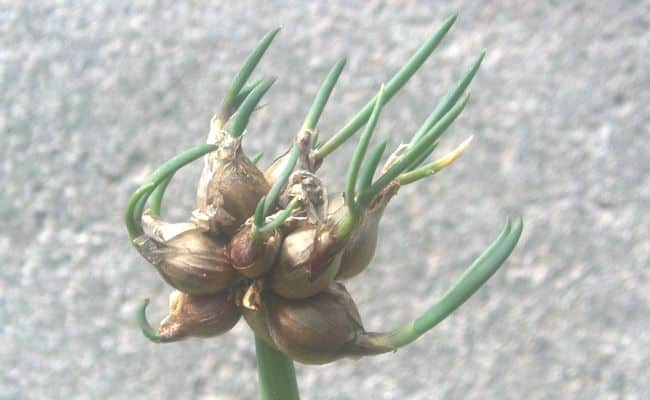

What a funny plant this Allium fistulosum is! You can sometimes find some growing spontaneously in light soil. Its stems bear sheathing and elongated leaves; after its pink flowering, bulbils appear at the end of the peduncle. They fall to the ground and ensure the propagation of the plant.
Its very perennial strain will provide you with fresh stems all year round.
The bulbils can accompany pickled pickles or be mashed into a vinaigrette. Their taste is close to that of shallots.
3. Rapunzel
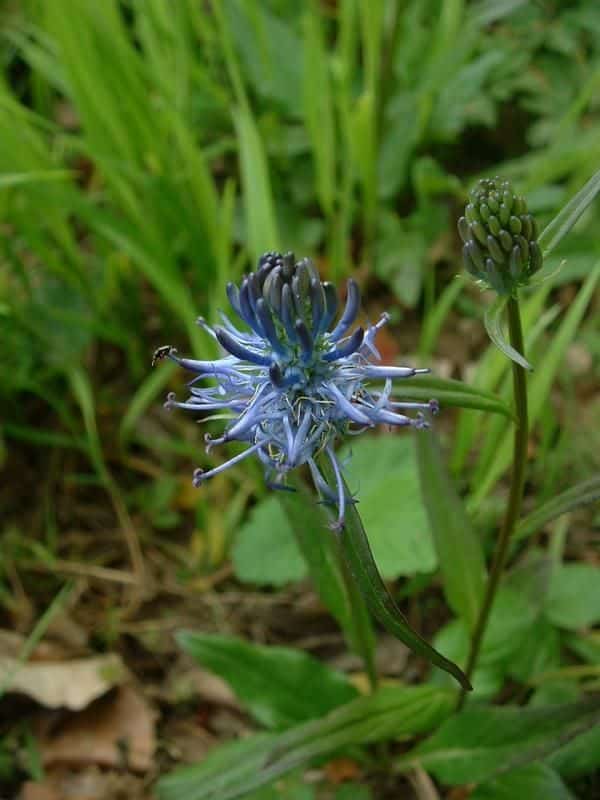

You can find this beautiful wild one (Campanula rapunculus) in meadows or on the edge of the forest. Do not hesitate to install this bellflower easy to recognize thanks to its pale blue bell flowers blooming in summer.
Its root forms a white, fleshy spindle. Harvest according to your needs, between November and March : then pull out the entire plant.
Enjoy the young leaves raw, the fleshy roots cooked or raw. The flowers will add color to salads.
4. Daubenton cabbage


Very rustic, this cabbage (Brassica oleraceavar. ramosa) branches out more as the young shoots are removed. No more big apples, you can adapt your harvests to your needs! Its taste evokes that of jet broccoli. Unlike other species, it is propagated by cuttings and not by seed.
The branches work wonders in stews and stews. You can also braise them with bacon.
5. Japanese crosne
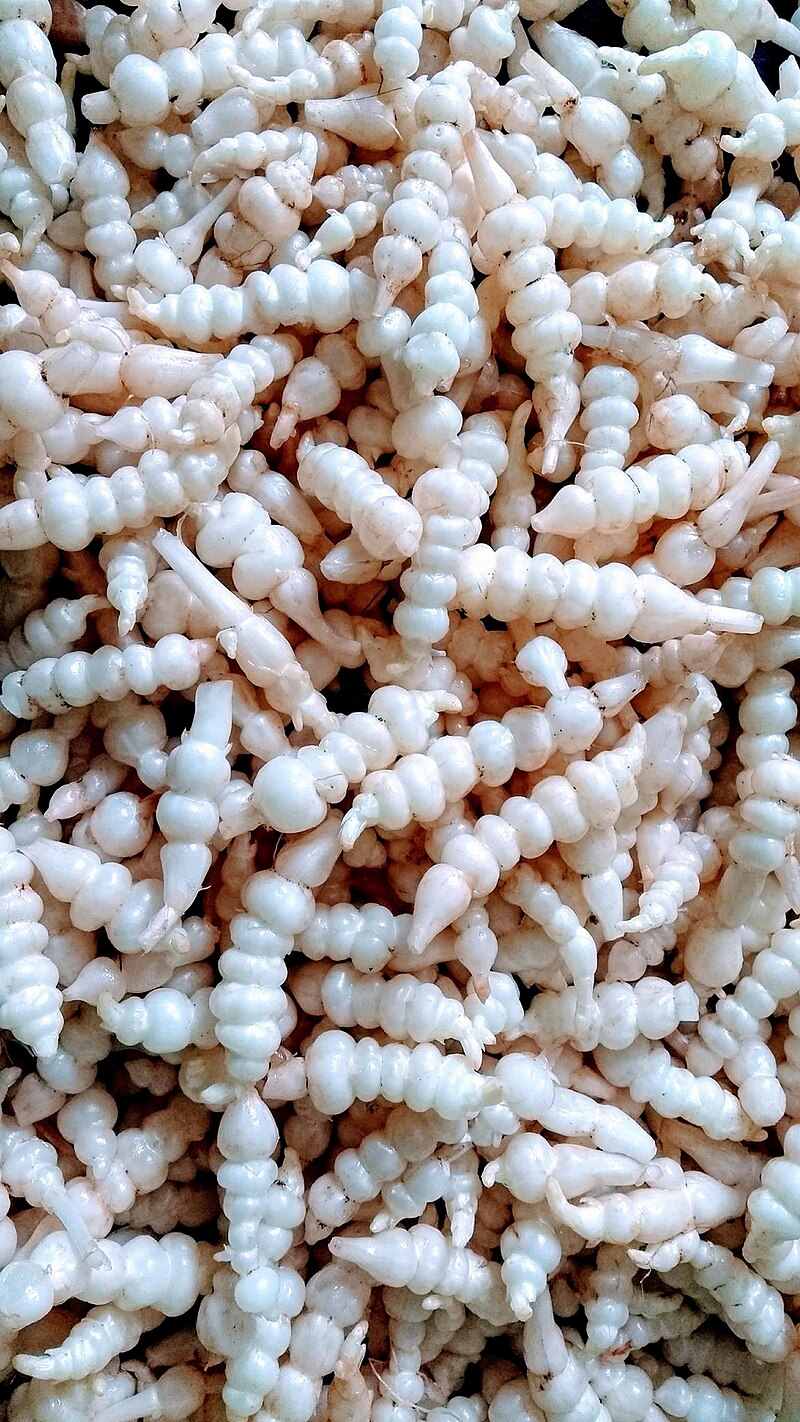

An often forgotten gastronomic treasure, Japanese crosne (Stachys affinis) is a tuber vegetable with unique appearances. Originally from Asia, it has acclimatized to our vegetable gardens where it thrives without requiring special care, sheltered from direct sunlight.
Its tubercles, with rounded and segmented shapes reminiscent of caterpillars, are harvest in the fall. Their crunchy texture and delicate flavor, evoking that of artichoke or hazelnut, make them a refined dish. Highly prized in cooking for their finesse, crosnes are most often eaten blanched then sautéed in butter or oil. They can also enhance salads, fried vegetables or even stews.
To preserve their delicious flavor and crunch, avoid cooking them for too long. A simple pan frying is enough to reveal their full flavor potential.

